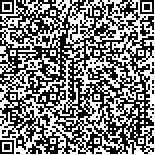下载中心
优秀审稿专家
优秀论文
相关链接
摘要

云下对地表温度一直是热红外遥感研究的难点,云下地表温度的变化不仅受到到达地表的辐射强度的影响,还与地表覆盖类型的热力学性质有关,本文通过开展野外观测实验,并利用地表能量平衡模型模拟地表温度在不同辐射条件的变化情况,以期获得不同地表类型的地表温度与辐射变化的定量关系,结果表明,在云覆盖情况下,到达地表面的辐射值减小,地表温度也随之减小,当云覆盖前地表温度越高,云覆盖后地表温度的变化幅度就越大,不同地表类型的云下地表温度在单位时间(min)内发生的温度值的单位变化量所需辐射值的变化量与云覆盖前温度高低呈线性关系。在长时间云覆盖情况下,地表温度的下降速度随着云覆盖时间的增加而不断放缓,当云层覆盖一定时间(10—20 min)后,地表温度会达到一个相对稳定的状态。
Thermal Infrared Remote Sensing (TIRS) data from earth observation system have been extensively used in agricultural applications, land survey, drought monitoring, ecology analysis, and many studies on surface processes of land-air interaction. Clouds are an essential obstacle in Remote Sensing (RS) applications and Land Surface Temperature (LST) retrieval from the TIRS data. However, a few studies have investigated the mechanism of LST change under the complicated impacts of clouds, thereby leading to the estimation of LST for cloud-covered pixels to remain unsolved in existing TIRS studies. LST change under cloud cover is mainly governed by the variation in solar radiation that reaches the cloud-covered ground and thermodynamic property of the land surface. This study aims to present an approach to estimating the LST covered by clouds based on the relationship between LST and radiation through the simulation of a surface energy balance model. The quantitative relationship between LST and radiation is estimated using the surface energy balance model and compared with field observation data. LST covered by the cloud under different conditions of surface solar radiation are simulated with the surface energy balance model. An interesting phenomenon is observed from the simulated result. The LST under the cloud decreases with minimal radiation that reaches the surface. The variation in radiation required for the LST change to 1℃ in unit time has a linear relationship with the LST value before cloud cover. The LST for cloud cover becomes a relatively stable value after 10-20 min under cloud cover. The LST covered by a rectangle with collective cloud parameters is simulated. The LST under cloud cover changes with the movement of the clouds. LST in front of the cloud along its moving direction is much higher than the middle and back area cover by the cloud after simulated with a hypothetical homogeneous rectangle cloud.

